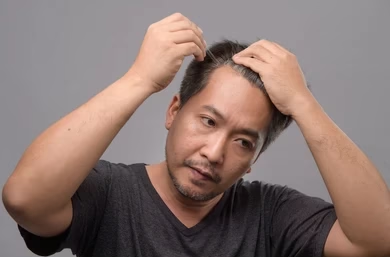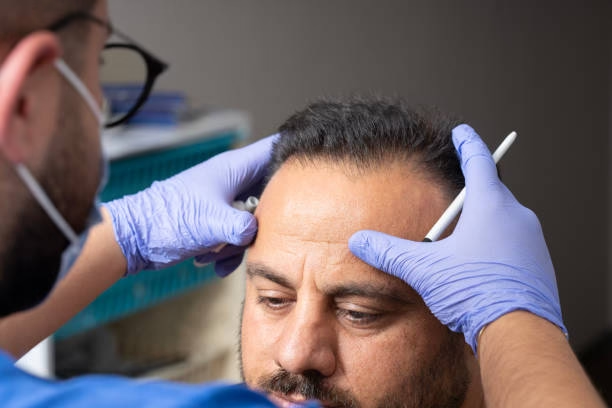Hair transplantation is a cutting-edge cosmetic procedure that offers a lasting solution for those struggling with hair loss. By relocating healthy hair follicles from donor areas to balding or thinning regions, this technique delivers natural-looking, permanent results. But while the immediate outcomes are promising, many patients wonder what happens over time—specifically, what to expect from a hair transplant after 10 years.
According to Dr. Viral Desai, an ace hair transplant in Mumbai, “The first year shows growth, the next few define maturity, but the 10-year mark truly reflects the success of your transplant. A well-executed hair transplant can offer lasting results, but understanding the journey beyond the initial years is crucial.”
Dr. Desai is renowned for his expertise in aesthetic medicine and hair transplant. With over two decades of experience, he has transformed the lives of numerous patients through meticulous procedures and personalized care. His clinic remains a top destination for those seeking a reliable hair transplant in Mumbai with sustained, natural-looking results.
A decade in, and your hair transplant’s journey continues. Here’s what you might observe.
What to Expect 10 Years Post-Transplant

- Sustained Growth: Transplanted hair follicles, being resistant to DHT (the hormone responsible for hair loss), typically continue to grow naturally even after 10 years.
- Natural Aging: While transplanted hair remains, it isn’t immune to the natural aging process. Expect potential graying or slight thinning over time.
- Surrounding Hair Loss: The native hair around the transplanted area may continue to thin or recede, leading to potential disparities in hair density.
- Maintenance Treatments: To preserve overall hair density, treatments like Minoxidil or Finasteride might be recommended to support non-transplanted hair. This is especially relevant when early results, such as those seen around 3 months after hair transplant, start becoming noticeable.
- Aesthetic Adjustments: As hair patterns evolve, some individuals opt for additional procedures to maintain a harmonious appearance.
Considering a hair transplant? Connect with a proficient specialist to discuss your long-term hair restoration goals.
Noticing changes a decade post-transplant? Here’s what to consider.
Do You Need a Second Hair Transplant After 10 Years?

While a well-performed transplant is designed to be permanent, it doesn’t stop the natural aging process or the continued thinning of your non-transplanted hair. As you approach the 10-year mark, you may notice gaps in density or new areas of hair loss—especially if your genetic pattern of baldness progresses.
This can sometimes create a mismatch between the thicker transplanted zones and the thinning native hair, prompting many patients to consider a second hair transplant. A follow-up procedure isn’t always necessary, but it can be a smart option to refine hairline aesthetics, fill in new thinning areas, or boost overall density.
Whether or not you need another transplant depends on several factors—your current hair condition, donor area availability, and your cosmetic goals. A skilled hair transplant surgeon in Mumbai, like Dr. Viral Desai, evaluates these aspects carefully before recommending a second procedure, ensuring both safety and satisfaction.
Potential Long-Term Complications
Awareness is key. Understand the possible challenges that might arise:
- Scalp Laxity: Over time, the scalp’s elasticity can change, potentially affecting the appearance of the transplanted area
- Donor Area Depletion: Multiple procedures can exhaust the donor area, limiting options for future transplants.
- Scarring: While modern techniques minimize scarring, some individuals may experience noticeable marks, especially if the procedure wasn’t performed optimally.
- Folliculitis: Inflammation of hair follicles can occur, leading to discomfort and potential hair loss if not addressed promptly.
- Cysts: Small cysts might develop in the transplanted area, usually resolving on their own but occasionally requiring medical attention.
When to Consult a Hair Transplant Surgeon

- Noticeable Hair Thinning or New Bald Patches: If you observe significant thinning or new areas of hair loss—even years after your transplant—it’s a clear signal to consult a hair transplant surgeon.
- Uneven Hair Density: Disparity between the transplanted and native hair can occur as aging progresses. A professional evaluation ensures this imbalance is corrected before it becomes more visible.
- Scalp Irritation or Discomfort: Persistent itching, tightness, or redness around the transplanted site could indicate complications that require expert attention.
- Desire for Aesthetic Refinement: Whether it’s enhancing your hairline, increasing density, or adjusting the design, a second opinion from a cosmetic surgeon can provide personalized options.
- After 5 Years or More: Periodic check-ins, especially 5 years after hair transplant or at the 10-year mark, help monitor hair health and anticipate future needs.
- Planning for Future Hair Loss Management: Even if you’re not facing immediate concerns, a proactive consultation helps you stay ahead in managing long-term hair retention strategies.
- Considering Combination Therapies: If you’re exploring adjunct treatments like PRP, laser therapy, or medical maintenance, your surgeon can guide you on the best integrated approach.
When to Consult a Hair Transplant Surgeon

- Noticeable Hair Thinning or New Bald Patches: If you observe significant thinning or new areas of hair loss—even years after your transplant—it’s a clear signal to consult a hair transplant surgeon.
- Uneven Hair Density: Disparity between the transplanted and native hair can occur as aging progresses. A professional evaluation ensures this imbalance is corrected before it becomes more visible.
- Scalp Irritation or Discomfort: Persistent itching, tightness, or redness around the transplanted site could indicate complications that require expert attention.
- Desire for Aesthetic Refinement: Whether it’s enhancing your hairline, increasing density, or adjusting the design, a second opinion from a cosmetic surgeon can provide personalized options.
- After 5 Years or More: Periodic check-ins, especially 5 years after hair transplant or at the 10-year mark, help monitor hair health and anticipate future needs.
- Planning for Future Hair Loss Management: Even if you’re not facing immediate concerns, a proactive consultation helps you stay ahead in managing long-term hair retention strategies.
- Considering Combination Therapies: If you’re exploring adjunct treatments like PRP, laser therapy, or medical maintenance, your surgeon can guide you on the best integrated approach.
Conclusion
A hair transplant can offer transformative results, but understanding its long-term trajectory is essential. With the expertise of a competent cosmetic surgeon in Mumbai, like Dr. Viral Desai, individuals can navigate the decade ahead with confidence, ensuring their hair remains a source of pride and self-assurance.
Experiencing changes years after your transplant? Reach out to a seasoned professional for expert evaluation and guidance on your hair restoration journey.
Frequently Asked Questions:
1. Will my transplanted hair fall out after 10 years?
Transplanted hair is typically permanent, but natural aging can cause slight thinning.
2. Does hair texture change 10 years after transplant?
Minor changes can occur due to aging or external factors, but the hair remains permanent.
3. Can I undergo a second transplant if the donor area is limited?
It depends on donor area quality. Dr. Viral Desai, a prominent celebrity surgeon in Mumbai, evaluates this before recommending further procedures.
4. Is the hairline still natural-looking after 10 years?
With proper planning, yes. However, changes in facial structure or hair thinning may affect appearance.
5. Does hair transplant hurt more the second time?
Modern techniques minimize discomfort, and most patients find repeat procedures equally tolerable.
6. Can I go bald even after a hair transplant?
You won’t lose transplanted hair, but untreated areas may continue to thin without preventative care.
7. How do I know if I need another transplant?
Visible thinning, new bald spots, or aesthetic concerns are valid reasons to consult your surgeon.
Reference
https://www.healthline.com/health/cosmetic-surgery/is-hair-transplant-permanent
Disclaimer: The content shared on this page is for informational purposes and not for promotional use.


